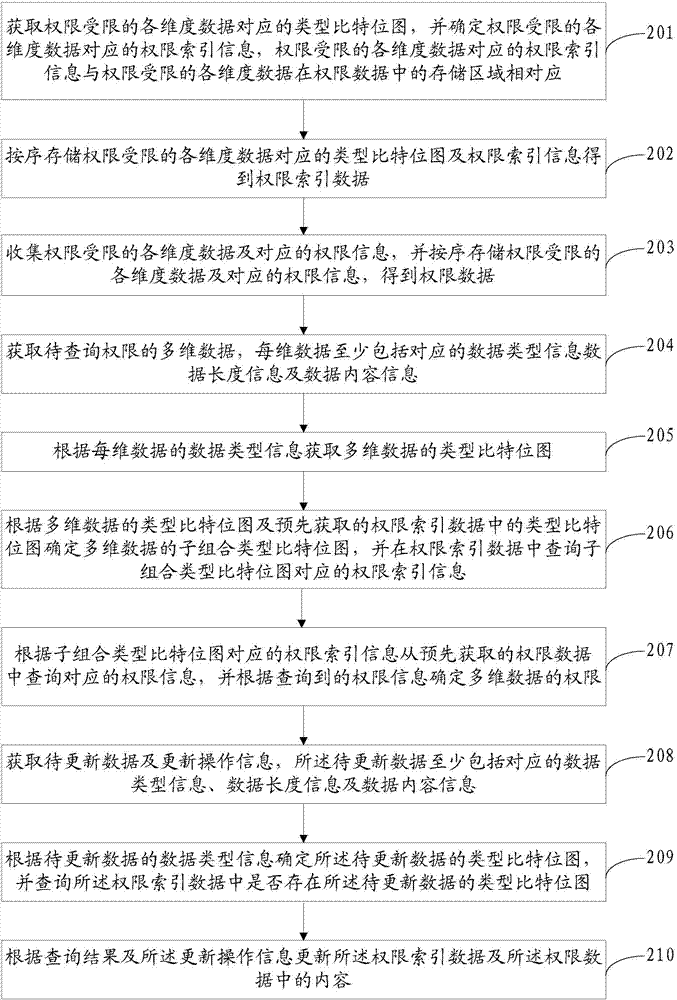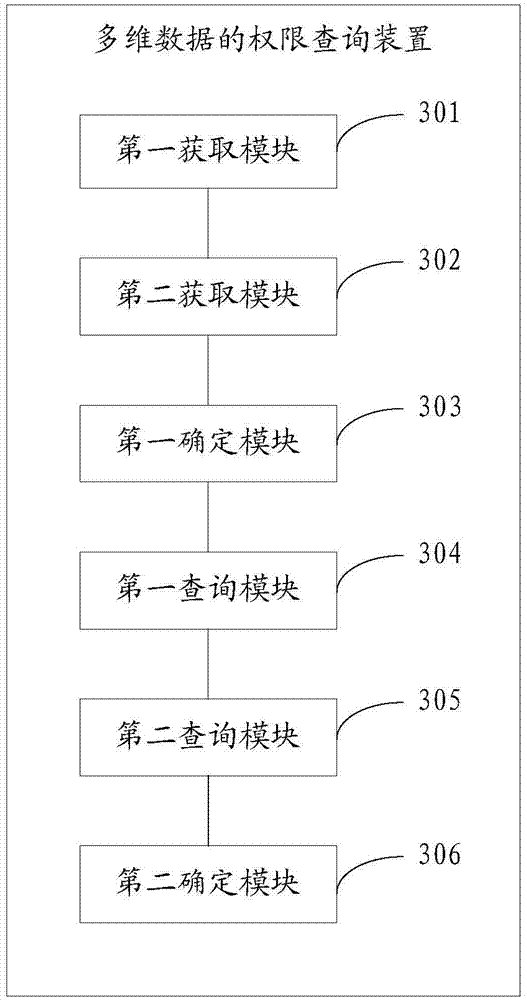Authority query method and device of multi-dimensional data
A multi-dimensional data and query method technology, applied in the computer field, can solve the problems of cumbersome query process, low query efficiency, and long time spent in the query process, and achieve the effect of improving the efficiency of authority query
- Summary
- Abstract
- Description
- Claims
- Application Information
AI Technical Summary
Problems solved by technology
Method used
Image
Examples
Embodiment 1
[0028] The embodiment of the present invention provides a multi-dimensional data permission query method, see figure 1 , the method flow provided by this embodiment includes:
[0029] 101: Obtain multi-dimensional data to be queried, and each dimensional data at least includes corresponding data type information, data length information, and data content information;
[0030] 102: Obtain the type bitmap of multi-dimensional data according to the data type information of each dimensional data;
[0031] 103: Determine the subcombination type bitmap of the multidimensional data according to the type bitmap of the multidimensional data and the pre-acquired type bitmap in the authority index data, and query the authority corresponding to the subcombination type bitmap in the authority index data index information;
[0032] 104: Query the corresponding permission information from the pre-acquired permission data according to the permission index information corresponding to the su...
Embodiment 2
[0035] In order to improve the efficiency of multi-dimensional data authority query, combined with the content of the first embodiment above, the embodiment of the present invention provides a multi-dimensional data authority query method, see figure 2 , the method flow provided by this embodiment includes:
[0036] 201: Collect the data of each dimension with limited authority and the corresponding authority information, and store the data of each dimension with limited authority and the corresponding authority information in order to obtain the authority data;
[0037] For this step, the purpose of collecting dimension data with restricted permissions and the corresponding permission information is to obtain permission data before querying the permissions of the multidimensional data, so as to query the permissions corresponding to the multidimensional data through the permission data. Among them, the data of each dimension with limited authority can be data of any dimensio...
Embodiment 3
[0142] An embodiment of the present invention provides a multi-dimensional data authority query device, see image 3 , the device consists of:
[0143] The first obtaining module 301 is used to obtain the multi-dimensional data whose authority is to be queried, and each dimensional data includes at least corresponding data type information, data length information and data content information;
[0144] The second obtaining module 302 is used to obtain the type bitmap of multi-dimensional data according to the data type information of each dimensional data;
[0145] The first determining module 303 is configured to determine the subcombination type bitmap of the multidimensional data according to the type bitmap of the multidimensional data and the type bitmap in the pre-acquired authority index data;
[0146] The first query module 304 is configured to query the permission index information corresponding to the subcombination type bitmap in the permission index data;
[0147...
PUM
 Login to View More
Login to View More Abstract
Description
Claims
Application Information
 Login to View More
Login to View More - R&D
- Intellectual Property
- Life Sciences
- Materials
- Tech Scout
- Unparalleled Data Quality
- Higher Quality Content
- 60% Fewer Hallucinations
Browse by: Latest US Patents, China's latest patents, Technical Efficacy Thesaurus, Application Domain, Technology Topic, Popular Technical Reports.
© 2025 PatSnap. All rights reserved.Legal|Privacy policy|Modern Slavery Act Transparency Statement|Sitemap|About US| Contact US: help@patsnap.com



